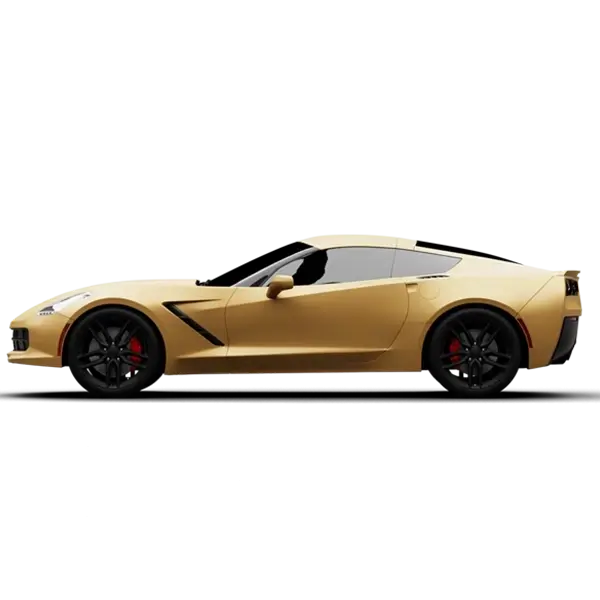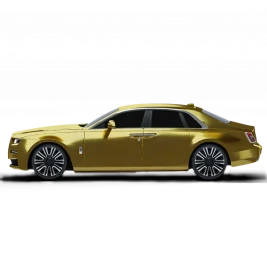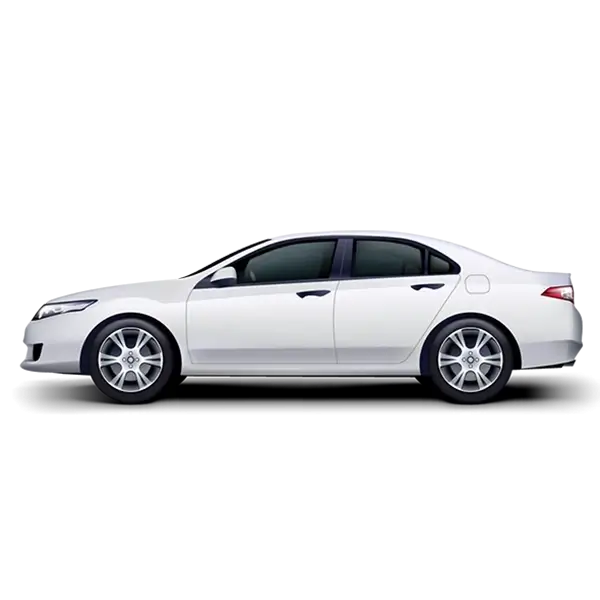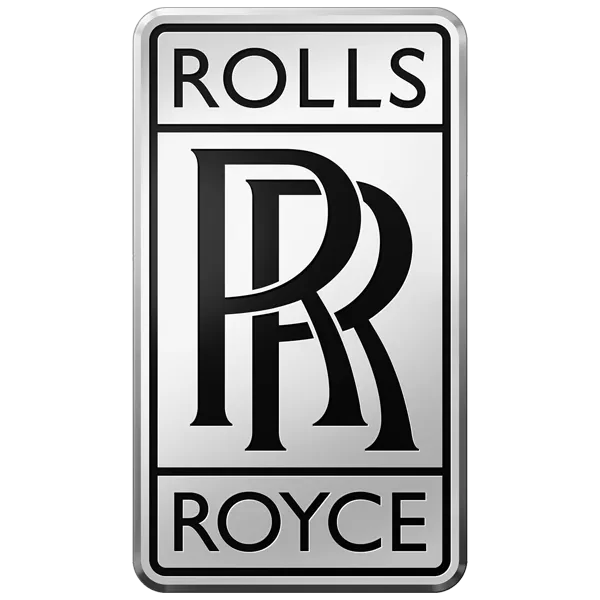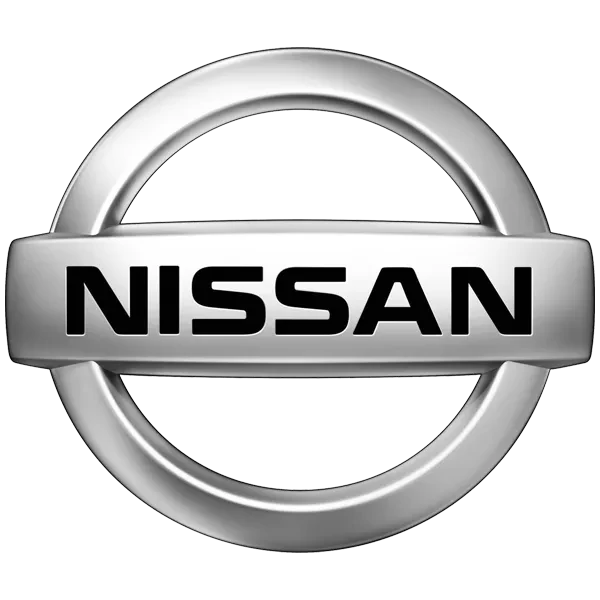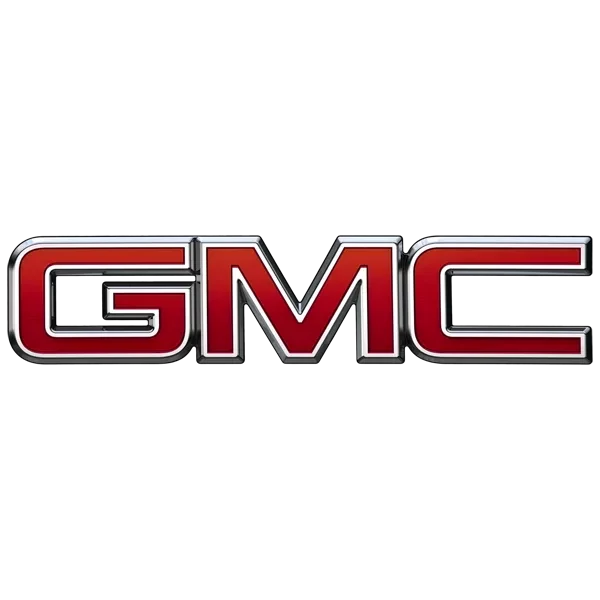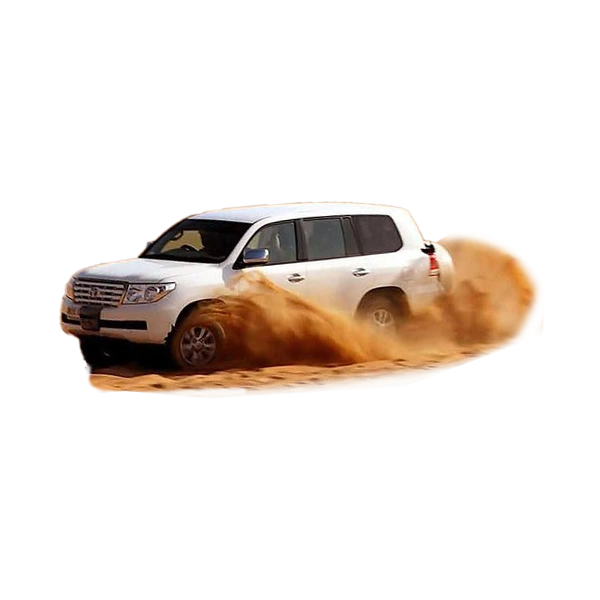Most Common Toyota Problems and Solutions
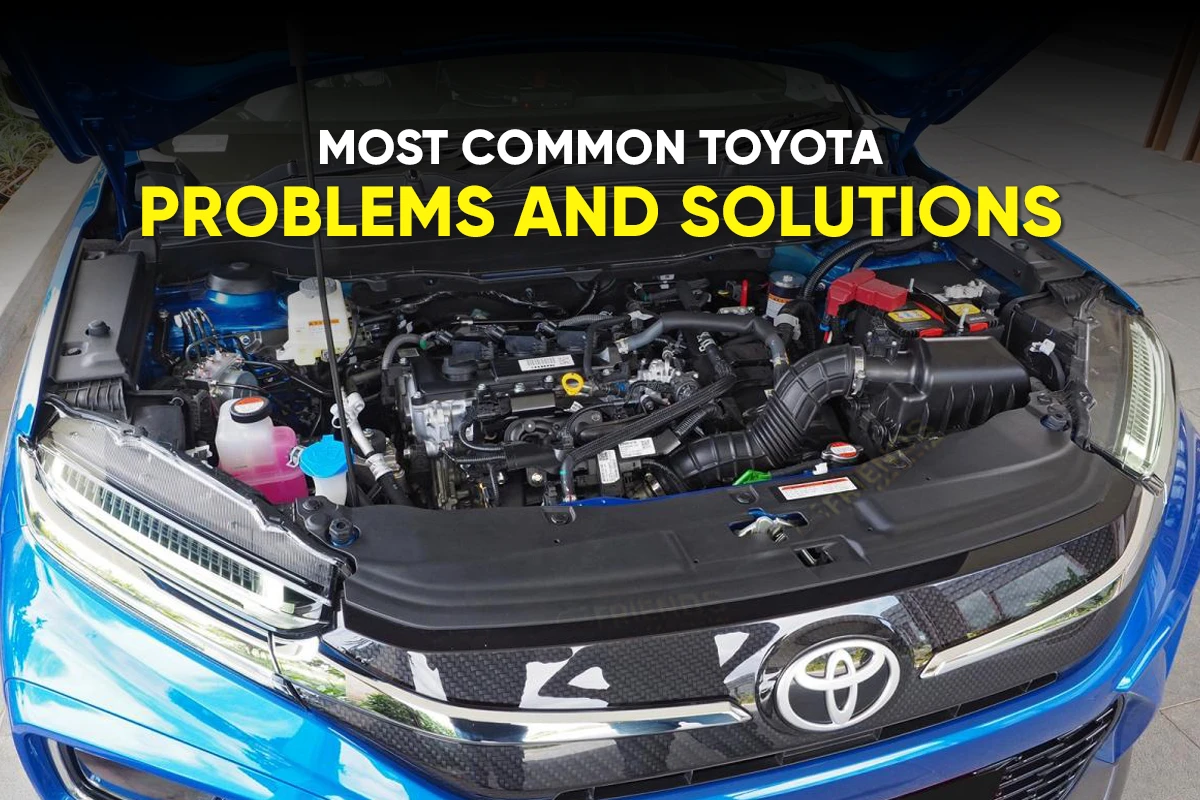
Toyota’s reputation for reliability, innovation, and exceptional after-sales service makes it a favorite among UAE drivers. While the brand is celebrated for its durability, even this trusted brand’s few models experience common issues over time. Many Toyota owners have reported these issues, so whether you drive a RAV4, Camry, or Corolla, understanding these frequently encountered Toyota problems in Dubai and their potential solutions is key to ensuring worry-free ownership. This guide explores Most Common Toyota Problems and Solutions—from minor electrical glitches to more significant concerns like engine leaks, offering practical insights to help keep your Toyota running smoothly. Let's dive in!
25 most common Toyota problems and solutions:
Engine Oil Leaks: Check oil levels monthly; replace faulty gaskets at a Toyota dealer.
Engine Stalling: Run diagnostic scan; replace faulty crankshaft sensors.
Turbocharger Failure: Check for recalls; maintain regular oil changes.
Faulty Fuel Pump: Use high-quality fuel; replace pump via recall if eligible.
Coolant Leaks: Inspect coolant weekly; replace cracked hoses at dealer.
Transmission Hesitation/Jerking: Update ECM software; replace contaminated fluid.
Transmission Slipping: Check fluid levels; update transmission software.
Transmission Creeping in Neutral: Check recalls; repair clutch plates at dealer.
Battery Drain: Test for electrical drains; replace faulty wiring.
Infotainment System Freezing: Update software; reset system at dealer.
Airbag Sensor Failure: Check recalls; replace faulty sensors for free.
Rearview Camera Failure: Check recalls; replace defective camera unit.
Door Lock Actuator Failure: Replace actuators at dealer; keep doors dry.
Brake Pedal Vibration/Noise: Inspect brakes every 10,000 miles; replace worn pads.
Brake Booster Pump Failure: Check recalls; replace pump at dealer.
Improperly Tightened Steering Fasteners: Check recalls; tighten fasteners at dealer.
Suspension Control Arm Failure: Check recalls; replace cracked arms for free.
Power Steering Fluid Leaks: Check fluid monthly; replace leaky hoses.
Water Leaking from Roof Racks: Clean drainage channels; reseal mounts at dealer.
Hood Latch Failure: Inspect latches regularly; replace faulty units.
Bumper Cover Detachment: Check recalls; secure brackets at dealer.
AC Compressor Failure: Check refrigerant annually; replace faulty compressor.
Window Regulator Issues: Avoid forcing windows; replace regulators at dealer.
Rear Brake Hose Damage: Check recalls; clean wheels to prevent debris buildup.
Rear Axle Nut Loosening: Check recalls; tighten nuts at dealer.
Engine Problems
1. Engine Oil Leaks
What Happens: Oil drips beneath the vehicle, leaving puddles after parking. A burning smell wafts from the engine bay during drives. Dashboard warnings signal low oil pressure frequently. Performance dips, with sluggish acceleration noticeable.
Why It Occurs: Worn gaskets degrade, allowing oil to seep out. High temperatures accelerate seal wear in the 2.4 turbo engine. Skipped maintenance exacerbates issues with Toyota RAV4 and other models. Manufacturing defects cause persistent leaks in some cases.
Impact: Low oil risks severe engine damage, costing thousands to repair. Reduced lubrication wears components faster, shortening engine life. Environmental hazards arise from oil spills on roads. Resale value drops due to visible leaks.
How to Fix: Check oil levels monthly and top off with recommended oil. Visit a Toyota service center to replace faulty gaskets or seals. Follow the maintenance schedule in the owner’s manual strictly. Address burning smells immediately to prevent damage.
Affected Models: RAV4 (2019–2023), Camry (2018–2023), Corolla (2019–2023).
2. Engine Stalling
What Happens: Engines shut off unexpectedly while idling or driving at low speeds. Restarting becomes difficult, often requiring multiple attempts. Power loss occurs suddenly, disrupting smooth operation. Warning lights may flash on the dashboard.
Why It Occurs: Faulty crankshaft sensors misread engine data, causing shutdowns. Contaminated fuel clogs injectors, starving the engine. Software glitches in the engine control module trigger stalls. Poor maintenance, like overdue spark plug changes, contributes significantly.
Impact: Stalling creates unsafe conditions, especially in traffic. Engine damage risks escalate if unresolved. Drivers face frustration from unreliable performance. Repair costs can climb without timely intervention.
How to Fix: Schedule a diagnostic scan at a Toyota dealer to pinpoint sensor issues. Replace faulty components like sensors or fuel injectors promptly. Use high-quality fuel to prevent clogs. Follow regular maintenance to reduce stalling risks.
Affected Models: Corolla (2021–2023), RAV4 (2019–2023), Tacoma (2019–2023).
3. Turbocharger Failure
What Happens: Performance drops, with sluggish acceleration and reduced power. Strange whistling noises emerge from the engine during acceleration. Smoke appears from the exhaust in severe cases. Check engine lights activate consistently-a common RAV4 Toyota issue.
Why It Occurs: Defective turbocharger assemblies leak oil or fail internally. Debris from manufacturing clogs turbo components, as seen in recalls. Overheating due to high loads damages bearings. Inadequate oil changes accelerate wear.
Impact: Poor performance affects driving experience, especially on highways. Turbo failure risks engine damage, leading to costly repairs. Fuel efficiency drops, increasing running costs. Safety concerns arise from sudden power loss.
How to Fix: Check for recalls on Toyota’s website for free turbo replacements. Visit a dealer for diagnostic tests if performance lags. Maintain regular oil changes to protect turbo components. Avoid high-load driving until issues are resolved.
Affected Models: RAV4 (2019–2023), Highlander (2020–2023).
4. Faulty Fuel Pump
What Happens: Sputtering occurs during acceleration, especially at low speeds. Starting the vehicle becomes challenging or impossible. Stalling happens unexpectedly, disrupting drives. Fuel efficiency drops noticeably.
Why It Occurs: Fuel pumps fail due to wear or manufacturing defects. Contaminated fuel clogs pump components, reducing flow. Electrical faults in the pump’s wiring cause malfunctions. Recalls have addressed common problems Toyota Camry and other models face.
Impact: Stalling increases accident risks in busy traffic. Stranded drivers face inconvenience and towing costs—a common Toyota problem. Pump replacements are expensive without recall coverage. Performance issues frustrate owners.
How to Fix: Use high-quality fuel to avoid clogs. Check for recalls on Toyota’s recall page. Replace faulty pumps at a Toyota service center. Schedule regular fuel system inspections.
Affected Models: RAV4 (2019–2020), Sienna (2019–2020), Camry (2019–2020).
5. Coolant Leaks
What Happens: Coolant pools under the vehicle after parking. Overheating triggers dashboard warnings during drives. Steam or a sweet smell emerges from the engine bay. Engine performance falters under high temperatures.
Why It Occurs: Cracked radiator hoses weaken over time, leaking fluid. Faulty water pumps fail, as seen in some recalls. Corrosion in cooling system components causes breaches. Neglected maintenance accelerates seal degradation.
Impact: Overheating risks severe engine damage, costing thousands. Driving with low coolant is unsafe, risking breakdowns. Environmental concerns arise from coolant spills. Repairs disrupt daily routines.
Coolant Leaks Toyota problem solutions: Inspect coolant levels weekly and refill with Toyota-approved fluid. Replace damaged hoses or pumps at a Toyota dealer. Follow cooling system maintenance schedules. Check for recalls for free repairs.
Affected Models: RAV4 (2019–2023), Corolla (2019–2023), Highlander (2020–2023).
Related: 25 Common Nissan Problems & Solutions
Transmission: Toyota Problems & Solutions
6. Transmission Hesitation/Jerking
What Happens: Shifting gears feels rough, with jerks during acceleration. Hesitation delays response when pressing the gas pedal. Merging onto highways becomes tricky due to sluggishness. Lurching sensations occur at low speeds.
Why It Occurs: Faulty transmission software misreads driver inputs, causing delays. Worn clutch packs in automatic transmissions trigger jerking. Contaminated fluid worsens performance issues. Design flaws in the ECM affect some models.
Impact: Jerky movements create safety risks in traffic. Ongoing issues damage transmission parts, raising repair costs. Drivers experience frustration from inconsistent performance. Fuel efficiency suffers due to poor shifts.
How to Fix: Check transmission fluid levels and replace if contaminated. Visit a Toyota dealer for ECM software updates. Replace worn components promptly to restore smoothness. Monitor for recalls covering transmission repairs.
Affected Models: RAV4 (2019–2023), Highlander (2021–2023), Corolla (2019–2023).
7. Transmission Slipping
What Happens: Gears slip unexpectedly, causing sudden power loss. Acceleration feels inconsistent, with revving without speed gain. Strange whining noises emerge during gear changes. Dashboard warnings may signal transmission issues.
Why It Occurs: Worn transmission bands fail to engage properly. Low fluid levels reduce hydraulic pressure, causing slips. Software glitches in the transmission control module contribute. Overheating from heavy use worsens the problem.
Impact: Slipping gears pose safety risks, especially on highways. Transmission damage escalates, leading to costly repairs. Drivers face unreliable performance, causing stress. Fuel economy drops significantly.
How to Fix: Inspect fluid levels regularly and top off with Toyota-approved fluid. Schedule a diagnostic check at a Toyota dealer. Update transmission software if available. Replace worn components to prevent further slipping.
Affected Models: Highlander (2021–2023), Tacoma (2019–2023), RAV4 (2019–2020).
8. Transmission Creeping in Neutral
What Happens: Vehicles move forward slightly when shifted to neutral. Creeping occurs on flat surfaces without brake application. Drivers notice unexpected movement during stops. Safety concerns arise in traffic situations.
Why It Occurs: Defective clutch plates fail to disengage fully in neutral. Transmission software miscalibrates power transfer to wheels. Manufacturing debris in the transmission causes sticking. Recalls have addressed issues with Toyota Tundra models.
Impact: Creeping increases crash risks in stop-and-go traffic. Drivers lose confidence in vehicle control. Transmission wear accelerates, raising repair costs. Safety violations may occur without fixes.
How to Fix: Check for recalls on Toyota’s recall page. Update transmission software at a Toyota dealer for free. Inspect and repair clutch plates if needed. Avoid driving until the issue is resolved.
Affected Models: Tundra (2022–2024), Sequoia (2023–2024).
Toyota Electrical Problem Solutions
9. Battery Drain
What Happens: Batteries die quickly, even after charging, preventing starts. Electrical accessories like lights or radio dim unexpectedly. Dashboard warnings indicate low battery voltage. Failures occur when parked or driving.
Why It Occurs: Parasitic drains from faulty wiring sap battery power. Defective alternators fail to charge batteries adequately. Short circuits in electrical systems cause rapid discharge. Recalls have addressed battery issues in some models.
Impact: Frequent battery failures strand drivers, causing inconvenience. Electrical malfunctions disrupt accessory functionality. Repair costs rise with repeated issues. Safety risks increase if the vehicle fails during operation.
How to Fix: Test for electrical drains at a Toyota service center. Replace faulty wiring or alternators promptly. Avoid leaving accessories on when parked. Check for recalls covering battery repairs.
Affected Models: RAV4 (2019–2022), Camry (2018–2020), Sienna (2019–2021).
10. Infotainment System Freezing
What Happens: Infotainment screens freeze or reboot randomly during use. Bluetooth connectivity fails, disrupting phone or music functions. Navigation systems become unresponsive, frustrating drivers. Controls lock up, requiring restarts.
Why It Occurs: This common RAV4 Toyota problem occurs due to outdated software causing system instability in early models. Hardware glitches in the infotainment unit trigger freezes. Overloaded systems from multiple connections contribute. Manufacturing defects affect some units.
Impact: Loss of navigation or communication features hinders driving. Frustration grows from unreliable systems, affecting comfort. Repair costs can be high without warranty coverage. Distractions arise from troubleshooting while driving.
How to Fix: Update infotainment software via Toyota’s website or dealer. Reset the system if freezing occurs frequently. Replace faulty hardware at a Toyota service center. Check for warranty-covered repairs.
Affected Models: RAV4 (2019–2020), Corolla (2019–2021), Camry (2018–2020).
11. Airbag Sensor Failure
What Happens: Airbag warning lights stay on, signaling potential non-deployment. Sensors fail to detect crashes accurately. Dashboard alerts persist, causing concern. Occupant safety becomes compromised during accidents.
Why It Occurs: Faulty sensors misread crash data due to defects. Wiring issues disrupt sensor communication. Recalls have addressed clock spring failures in steering assemblies. Moisture exposure damages electrical components.
Impact: Non-deploying airbags increase injury risks in crashes. Drivers face anxiety from constant warning lights. Repair costs are significant without recall coverage. Safety compliance fails, risking legal issues.
How to Fix: Check for recalls on Toyota’s recall page. Replace faulty sensors or clock springs at a dealer for free. Test airbag systems regularly during maintenance. Avoid driving until repairs are complete.
Affected Models: RAV4 (2019–2020), Camry (2019–2020), Corolla (2021–2023).
12. Rearview Camera Failure
What Happens: Rearview cameras fail to display images when reversing. Screens show blank or distorted visuals, hindering visibility. Warnings may appear on the dashboard. Parking becomes challenging, especially in tight spaces.
Why It Occurs: Defective camera units short-circuit or fail internally. Wiring harness issues disrupt signal transmission. Software glitches prevent proper image rendering. Recalls have addressed common problems Toyota Corolla and other models face.
Impact: Reduced visibility increases risks of rear-end collisions. Drivers face frustration from unreliable parking aids. Repair costs are high without recall coverage. Safety features fail to perform as expected.
How to Fix: Check for recalls on Toyota’s recall page. Replace faulty cameras or wiring at a Toyota dealer. Update camera software if available. Test the system regularly to ensure functionality.
Affected Models: RAV4 (2019–2020), Corolla (2021–2023), Tacoma (2022–2023).
13. Door Lock Actuator Failure
What Happens: With this Toyota problem, doors fail to lock or unlock using the key fob or buttons. Locks stick, requiring manual operation. Grinding noises occur when attempting to lock. Security concerns arise from unreliable locks.
Why It Occurs: Actuators wear out over time, losing functionality. Moisture exposure causes corrosion in electrical components. Short circuits in the actuator system trigger failures. Manufacturing defects affect some units.
Impact: Faulty locks compromise vehicle security, risking theft. Drivers face inconvenience from manual locking. Repair costs add up without warranty coverage. Frustration grows from unreliable access.
How to Fix: Test locks regularly for proper operation. Replace faulty actuators at a Toyota service center. Keep doors dry to prevent corrosion. Check for warranty or recall-covered repairs.
Affected Models: RAV4 (2019–2022), Camry (2018–2020), Sienna (2019–2021).
Related: Top Problems With Electric Cars and Solutions
Safety System Problems
14. Brake Pedal Vibration/Noise
What Happens: Brake pedals vibrate or squeal loudly when pressed. Stopping feels rough, especially at low speeds. Noises disrupt driving comfort noticeably. Braking performance may feel inconsistent.
Why It Occurs: Worn brake pads create friction against rotors, acting as the root cause of this common Toyota problem. Warped rotors cause vibrations during braking. Debris buildup in brake components worsens noise. Poor maintenance accelerates wear in some models.
Impact: Reduced braking power poses safety risks. Drivers experience discomfort from noisy brakes. Repair costs rise if rotors need replacement. Confidence in braking diminishes over time.
How to Fix: Inspect brakes every 10,000 miles at a Toyota dealer. Replace worn pads or rotors promptly. Clean brake components to remove debris. Follow maintenance schedules to prevent issues.
Affected Models: RAV4 (2019–2023), Tacoma (2019–2023), Highlander (2020–2023).
15. Brake Booster Pump Failure
What Happens: Brake assist weakens, increasing stopping distances. Stability control deactivates, affecting handling. Dashboard warnings signal pump failure. Drivers notice harder brake pedal effort.
Why It Occurs: Defective booster pumps fail to provide adequate pressure. Electrical faults disrupt pump operation. Recalls have addressed issues with Toyota hybrid cars like the Prius. Wear from heavy use contributes to failures.
Impact: Reduced braking power risks collisions, especially in emergencies. Drivers lose confidence in vehicle control. Repairs are costly without recall coverage. Safety systems fail to perform as intended.
How to Fix: Check for recalls on Toyota’s recall page. Replace faulty pumps at a Toyota dealer for free. Test brake systems during routine maintenance. Avoid driving until repairs are completed.
Affected Models: Prius (2019–2020), RAV4 Hybrid (2019–2020).
16. Improperly Tightened Steering Fasteners
What Happens: Steering feels loose or unresponsive during turns. Vibrations occur in the steering wheel at high speeds. Bolts may loosen further, risking control loss. Dashboard warnings may activate.
Why It Occurs: Fasteners in the steering assembly are improperly tightened. Manufacturing errors during assembly cause loosening. Vibrations from rough roads exacerbate the issue. Recalls have addressed this problem.
Impact: Loose steering increases crash risks, especially at speed. Drivers face anxiety from unpredictable handling. Repairs are urgent to restore safety. Vehicle reliability suffers without fixes.
How to Fix: Check for recalls on Toyota’s recall page. Tighten or replace fasteners at a Toyota dealer for free. Inspect steering during routine maintenance. Avoid driving until the issue is resolved.
Affected Models: 4Runner (2019–2020), Tacoma (2019–2020).
Suspension and Steering Problem Solutions
17. Suspension Control Arm Failure
What Happens: Handling feels unstable, especially over bumps. Cracks in suspension arms cause rattling noises. Alignment issues lead to uneven tire wear. Safety concerns arise during high-speed driving.
Why It Occurs: Defective control arms crack under stress, as seen in recalls. Manufacturing flaws weaken arm integrity. Harsh driving conditions accelerate wear. Poor maintenance contributes to early failure.
Impact: Unstable handling risks accidents on rough roads. Tire replacement costs rise due to misalignment. Drivers face discomfort from noisy suspension. Repairs are costly without recall coverage.
How to Fix: Check for recalls on Toyota’s recall page. Replace cracked arms at a Toyota dealer for free. Align wheels regularly to prevent wear. Inspect suspension during maintenance checks.
Affected Models: RAV4 (2019–2020).
18. Power Steering Fluid Leaks
What Happens: Steering feels heavy or unresponsive, especially at low speeds. Fluid leaks under the vehicle, forming puddles. Whining noises occur when turning the wheel. Dashboard warnings may signal low fluid.
Why It Occurs: Worn hoses or seals leak fluid under pressure. Corrosion from moisture damages steering components. Manufacturing defects in some systems cause leaks. Neglected maintenance accelerates seal wear.
Impact: Difficult steering risks control loss, endangering safety. Fluid leaks create environmental hazards. Repair costs rise if pumps are damaged. Drivers face frustration from poor handling.
How to Fix: Check steering fluid levels monthly and refill as needed. Replace leaky hoses or seals at a Toyota dealer. Follow maintenance schedules to prevent leaks. Address noises promptly to avoid pump damage.
Affected Models: RAV4 (2019–2022), Highlander (2020–2023).
Exterior and Body Toyota Problem Solutions
19. Water Leaking from Roof Racks
What Happens: Water seeps into the cabin through roof rack mounts during rain. Seats or electronics get wet, causing damage. Mold or mildew develops in severe cases. Drivers notice dripping noises inside.
Why It Occurs: Poorly sealed roof rack mounts allow water ingress. Clogged drainage channels trap water, worsening leaks. Manufacturing defects affect seal integrity. Exposure to heavy rain accelerates the issue.
Impact: Water damage ruins interior components, raising repair costs. Mold growth poses health risks for passengers. Resale value drops due to interior damage. Drivers face discomfort from wet cabins.
How to Fix: Clean roof rack drainage channels regularly. Reseal mounts at a Toyota dealer to prevent leaks. Park under cover during heavy rain. Replace damaged interior components promptly.
Affected Models: RAV4 (2019–2023).
Related: 25 Common Hyundai Problems & Solutions
20. Hood Latch Failure
What Happens: Hoods pop open unexpectedly while driving, obstructing views. Latches fail to secure properly, causing rattles. Warning signs may appear on the dashboard. Safety risks increase during high-speed travel.
Why It Occurs: Corroded latches break down from moisture exposure. Worn mechanisms fail to lock securely. Manufacturing defects cause latch misalignment. Debris buildup prevents proper engagement.
Impact: Open hoods risk accidents by blocking visibility. Drivers face anxiety from unreliable latches. Repair costs add up without warranty coverage. Vehicle reliability suffers significantly.
How to Fix: Inspect hood latches during routine maintenance. Replace faulty latches at a Toyota dealer. Check for recalls covering latch repairs. Clean latches to remove debris regularly.
Affected Models: RAV4 (2019–2020), Camry (2018–2020).
21. Bumper Cover Detachment
What Happens: Bumpers loosen or detach after minor Impacts. Rattling noises occur while driving over bumps. Alignment issues make bumpers appear misfitted. Safety concerns arise from unsecured components.
Why It Occurs: Weak mounting brackets fail to hold bumpers securely. Manufacturing defects weaken attachment points. Recalls have addressed common problems Toyota Highlander models face. Vibrations from rough roads loosen brackets.
Impact: Detached bumpers create road hazards, risking accidents. Repair costs rise for new bumper covers. Vehicle appearance suffers, lowering resale value. Drivers face frustration from frequent issues.
How to Fix: Check for recalls on Toyota’s recall page. Replace bumper covers at a Toyota dealer for free. Inspect brackets during maintenance checks. Secure loose bumpers immediately.
Affected Models: Highlander (2020–2023).
Interior and Comfort: Toyota Problems and Solutions
22. AC Compressor Failure
What Happens: Air conditioners blow warm air, failing to cool the cabin. Rattling noises emerge from the AC system. Cooling performance drops in hot weather. Drivers notice reduced comfort during drives.
Why It Occurs: Compressors seize from wear or low refrigerant levels. Overuse in hot climates accelerates failure. Manufacturing defects affect some units. Poor maintenance, like skipped AC checks, contributes.
Impact: Lack of cooling reduces comfort, especially in Dubai’s heat. Repair costs are high for AC compressor issues & replacements. Drivers face frustration from unreliable AC. Health risks arise in extreme temperatures.
AC Compressor Toyota Problem Solution: Check refrigerant levels annually and refill as needed. Replace faulty compressors at a Toyota service center. Schedule regular AC maintenance checks. Avoid overuse in extreme heat.
Affected Models: RAV4 (2019–2022), Corolla (2019–2023), Camry (2018–2020).
23. Window Regulator Issues
What Happens: Windows stick or move slowly when operated. Dropping windows fail to stay up, posing security risks. Clicking noises occur when using controls. Drivers face inconvenience from faulty windows.
Why It Occurs: Regulators wear out, losing mechanical strength. Electrical faults disrupt motor operation. Moisture exposure causes corrosion in regulators. Manufacturing defects affect some units.
Impact: Stuck windows reduce convenience and security. Weather exposure damages interiors through open windows. Repair costs rise without warranty coverage. Frustration grows from unreliable operation.
How to Fix: Avoid forcing stuck windows to prevent further damage. Replace faulty regulators at a Toyota dealer. Check for warranty-covered repairs. Keep windows clean to reduce wear.
Affected Models: RAV4 (2019–2022), Sienna (2019–2021), Camry (2018–2020).
Brake and Axle Problems and Solutions
24. Rear Brake Hose Damage
What Happens: Braking performance weakens, increasing stopping distances. Fluid leaks appear under the vehicle’s rear. Dashboard warnings signal brake issues. Mud buildup inside wheels causes damage.
Why It Occurs: Rear brake hoses get damaged by mud and debris. Manufacturing defects weaken hose materials. Recalls have addressed common problems Toyota Tacoma models face. Poor cleaning in off-road conditions exacerbates issues.
Impact: Reduced braking power risks collisions, especially in emergencies. Fluid leaks create environmental hazards. Repair costs are high without recall coverage. Safety concerns disrupt driver confidence.
How to Fix: Check for recalls on Toyota’s recall page. Replace damaged hoses at a Toyota dealer for free. Clean wheels regularly to prevent debris buildup. Inspect brakes after off-road driving.
Affected Models: Tacoma (2024–2025).
25. Rear Axle Nut Loosening
What Happens: Nuts on rear axles loosen, causing rattling noises. Stability decreases, affecting handling on turns. Brake performance may weaken over time. Parts may detach, creating road hazards.
Why It Occurs: Welding debris on axles causes nuts to loosen. Manufacturing errors during assembly contribute. Vibrations from driving accelerate the issue. Recalls have addressed issues with Toyota Sienna models.
Impact: Loose axles risk accidents from reduced stability. Detached parts create road hazards, endangering others. Repair costs rise without recall coverage. Drivers face anxiety from handling issues.
How to Fix: Check for recalls on Toyota’s recall page. Tighten or replace axle nuts at a Toyota dealer for free. Inspect axles during routine maintenance. Avoid driving until repairs are complete.
Affected Models: Tacoma (2022–2023), Sienna (2021–2023).
Final Thoughts
Despite Toyota’s unshakable reputation for reliability, some of its models can experience common issues, such as engine stalling, coolant leaks, AC compressor failures, and brake booster pump issues. These are often reported in popular models like the RAV4, Tacoma, and Camry. If you’re a current Toyota owner or planning a purchase in the near future, this guide serves as your blueprint to a more informed and hassle-free Toyota ownership experience. You are now better equipped to understand potential challenges and know when to seek professional assistance for complete peace of mind. Remember, understanding your car's specific issues and their solutions is always a significant advantage.
Written by: FriendsCarRental
Published at: Mon, Jul 21, 2025 4:46 PM
Leave a Reply
Your email address will not be published. Required fields are marked *
Car Rental in Dubai
AED 2500
DAY
AED 0
MONTH
-
 SUV
SUV -
 4 Doors
4 Doors -
 5 Seats
5 Seats
- 1 Day Rental Available
- Deposit: Not Required
- Insurance Included
AED 5500
DAY
AED 0
MONTH
-
 Sports
Sports -
 2 Doors
2 Doors -
 2 Seats
2 Seats
- 1 Day Rental Available
- Deposit: Not Required
- Insurance Included
AED 1200
DAY
AED 0
MONTH
-
 SUV
SUV -
 4 Doors
4 Doors -
 5 Seats
5 Seats
- 1 Day Rental Available
- Deposit: Not Required
- Insurance Included
AED 1600
DAY
AED 0
MONTH
-
 SUV
SUV -
 4 Doors
4 Doors -
 5 Seats
5 Seats
- 1 Day Rental Available
- Deposit: Not Required
- Insurance Included
AED 1500
DAY
AED 28500
MONTH
-
 SUV
SUV -
 4 Doors
4 Doors -
 5 Seats
5 Seats
- 1 Day Rental Available
- Deposit: Not Required
- Insurance Included

 عربي
عربي
 English
English
 Français
Français
 Русский
Русский
 中国人
中国人
 Nederlands
Nederlands
 Española
Española
 Türkçe
Türkçe
 Italiana
Italiana








